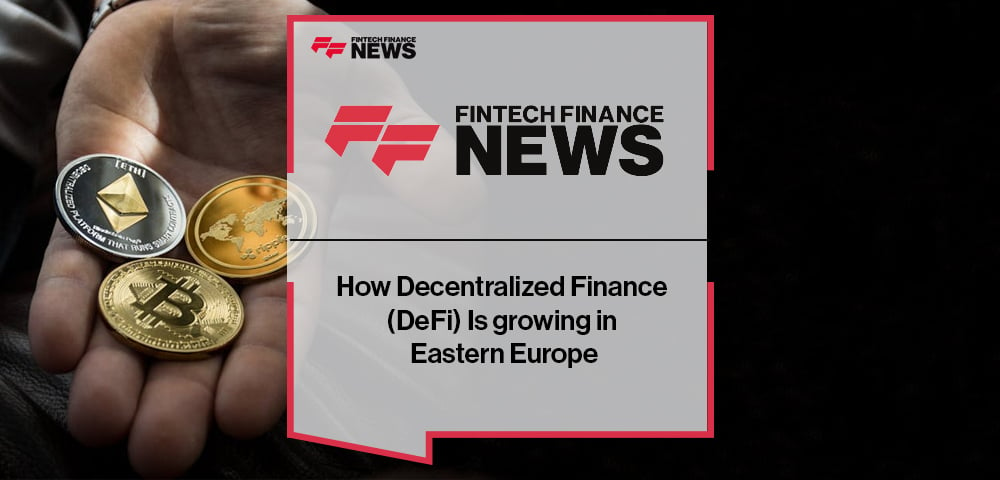2024 brought many changes for decentralized finance (DeFi). We have seen its total value climb into the billions, $100 billion to be precise. This means that financial services have become more accessible. Eastern Europe was the major player in this revolution. A significant 3% comes from its DeFi trading activities.
How is DeFi used in Eastern Europe?
Financial services have embraced DeFi by channeling the service through blockchain technology. This means they can still provide the same services without relying on a formal banking system. This is what reduces the cost of transactions, making them much faster and more accessible.
Eastern Europe is also number 4 in the global cryptocurrency market. This means that crypto is no stranger to them. Think about it, the region recorded over $4.5 billion in transactions between June 2022 and June 2023. This feat was achieved even in the midst of the war between Russia and Ukraine, leading to 3% growth in countries from central and eastern Europe.
A few key factors caused this astonishing transition:
- Institutional investors found themselves wanting a piece of this pie. On the other hand, individuals appreciated the convenience and regularly chose it as an option.
- Restrictions on Russian users also forced people to use local platforms. This means that blockchain has also become more popular in Poland and Ukraine.
- Eastern Europe also had to align with EU rules, leading to rapid growth in DeFi.
Popular cryptocurrencies
All thanks to popular digital currencies such as Bitcoin and Ethereum, Eastern Europe has seen growth in DeFi. The system eliminates third parties while providing the necessary security. These transactions are also liquid and stable.
Newer currencies such as Solana and Polkadot have not taken a back seat as they are also growing steadily. All this thanks to their interoperable and scalable use. Blockchain solutions are also the main driver of DeFi applications. They have become the ultimate solution to ensure that more transactions can be carried out across different networks.
Here are some popular cryptocurrencies used for DeFi services in Eastern Europe:
- Binance Coin (BNB) has low transaction costs and fast processing times. This means that it is also one of the best solutions for Defi applications.
- Solana (SOL) is also known for its scalability and fast transaction speeds.
- Polkadot (DOT) a great technology solution that can be used for defi services. Its nature also means that it can be used on different blockchains.
- Avalanche (AVAX) offers low latency and high throughput, making it a great platform for building a decentralized application.
- Cardano (ADA) is known for focusing on sustainability and security.
Technological innovation causes change
The strong technology environment in Eastern Europe has been a key player in the growth of DeFi. Countries like Romania and Poland have also managed to attract global investment to create new research and development centers. This means that these countries can use their local talents, especially those with STEM backgrounds, to work in these centers.
Venture capital investments have also increased, notably in Lithuania and Estonia. This is all due to the country’s strong startup community. This means that startups such as Shard Labs in Croatia and DeCenter in Serbia have seen major success. These are some of the blockchain technology companies that have created a new decentralized financial solution.
Opportunities for greater financial inclusion
As more users adopt DeFi services, financial options become easier and simpler. The DeFi market in Eastern Europe is also expected to grow by 8.2% annually from 2024 to 2028. This means that the market volume will be pegged at $1,580 million by 2028. On the other end, revenue is expected to reach $1,151 million, with average revenue of $1,681 for individual users.
By 2028, more users are expected to join this trend, with an expected increase of 772,800 people. This means that user penetration is expected to increase from 0.28% in 2024 to 0.32% in 2028.
What challenges does Eastern Europe face when fostering the growth of decentralized finance?
Many challenges limit the growth of DeFi. Below are some of the challenges that are causing stunted growth in the decentralized financial system.
1. Regulatory uncertainty
One of the limitations that has prevented DeFi from growing as expected in Eastern Europe is the regulatory landscape. The lack of clear guidelines and established laws has resulted in the company having fewer investors. Unsurprisingly, investors are hesitant to move into DeFi due to the uncertainty caused by regulatory issues. The European Regulation on Markets in Crypto-Assets (MiCA), although comprehensive, does not directly concern DeFi.
2. Market saturation and innovation stagnation
There is a saturation of services in the Eastern European DeFi market with many protocols offering similar functions. To succeed, DeFi projects must stand out by offering innovative solutions.
3. Infrastructure and talent gaps
Many Eastern European countries do not have the latest digital infrastructure and additionally suffer from a shortage of qualified professionals. This is especially true in the area of blockchain technology. These gaps can slow down the development and implementation of new DeFi solutions.
4. Real World Asset (RWA) Integration
Tokenizing real-world assets can pose many challenges to DeFi technology. This situation is compounded by regulatory uncertainties and the complex process of merging RWAs into DeFi protocols.
Conclusion
Interest in DeFi is growing in Eastern European countries, indicating a shift towards more accessible and equitable financial services. This trend is expected to reduce financial inequality in the region by involving more people in the economy.




